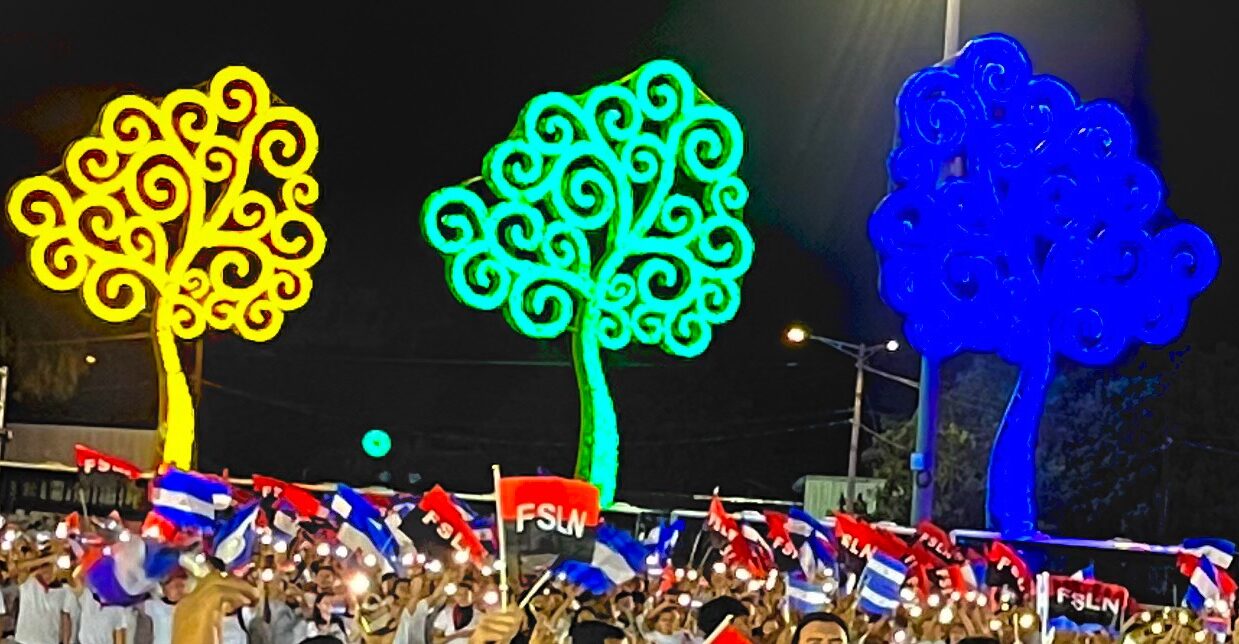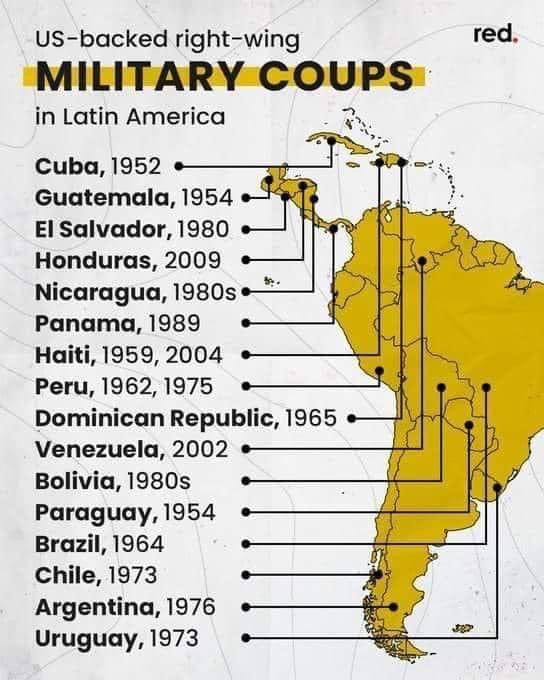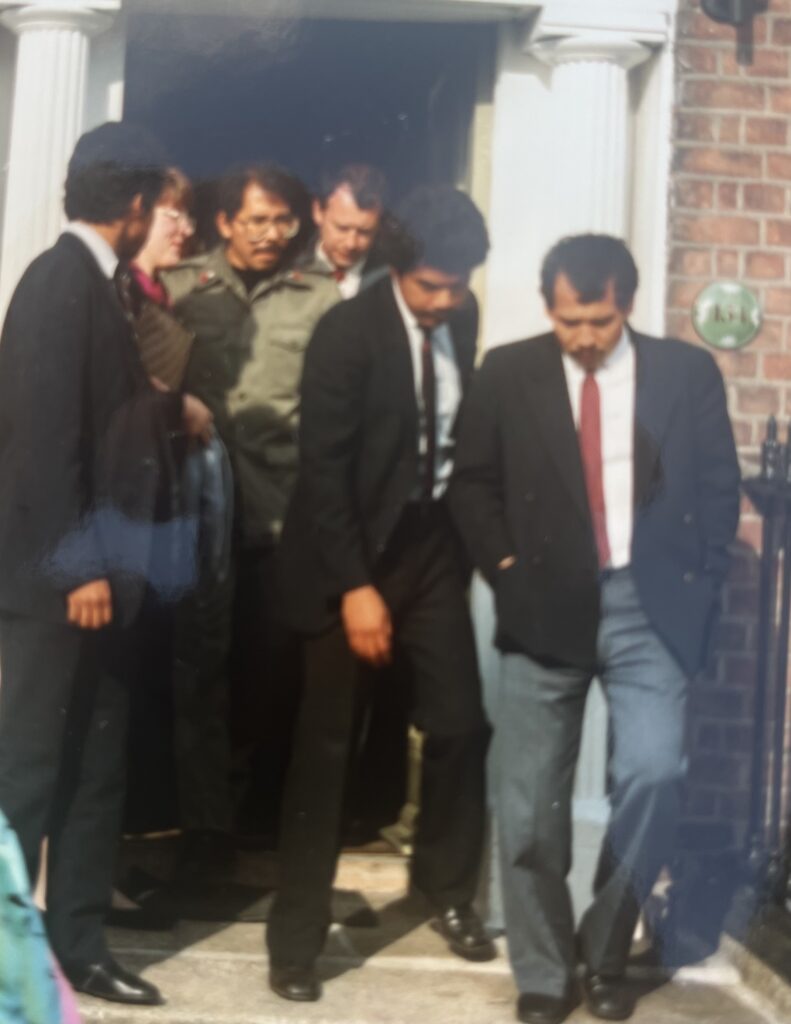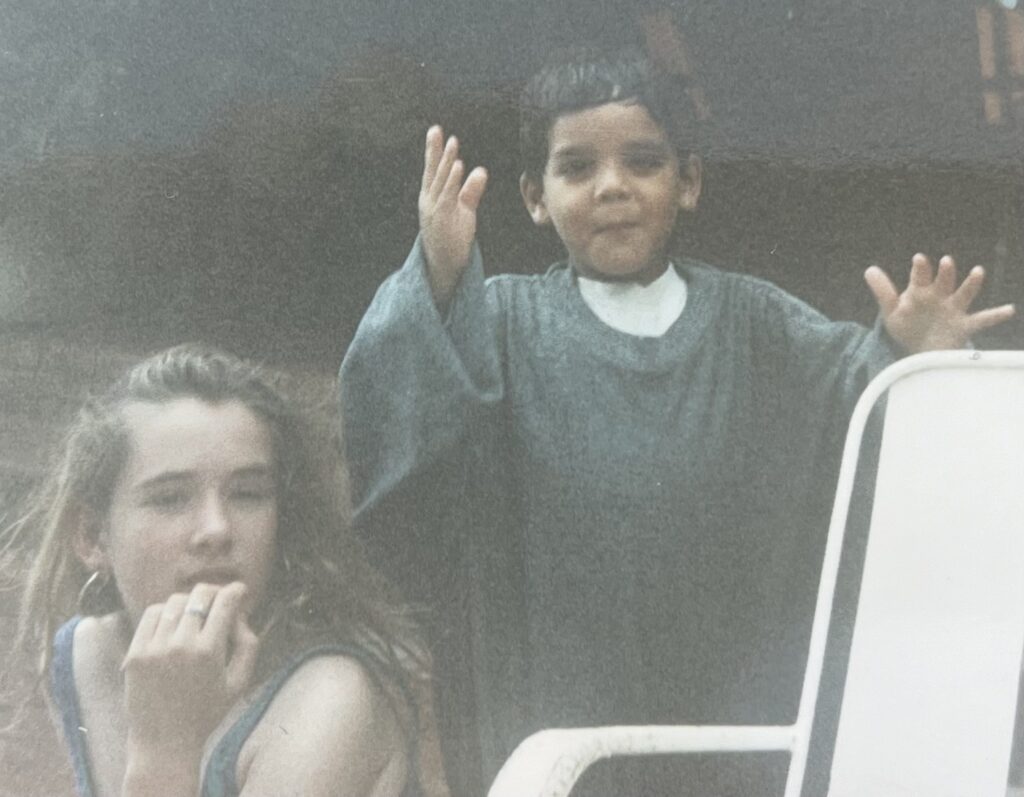Physical Address
304 North Cardinal St.
Dorchester Center, MA 02124

Give a man a fish feed him for a day, teach him to fish, feed him for life
By Eleanor Lanigan:
In 1972 Manugua was flattened by an Earthquake leaving 10,000 dead and 300,000 people homeless. Adding to the despair much of the $32 million dollars of foreign aid sent to help rebuild the city was pilfered by the Samoza family, who had ruled the country as a dictatorship since 1936. This was the last straw for the Nicaraguan people and the beginning of the end of the Somoza regime.

On July 19, 1979 Sandinista revolutionaries entered Managua. A few months later Ronald Reagan was elected president. The US alarmed by the spread of Socialism in South America and not in a position yet to organise a coup as they had in Chile in 1974, ( since the Second World War the US has engaged in many covert activities to maintain corrupt governments that would prioritise US interests in South America) suspended all aid to Nicaragua. Then sent money and weapons to support a counter revolutionary terrorist group of Somoza supporters operating out of Honduras called “The Contras”.
In 1985 Nicaragua held its first democratic elections in fifty years. Daniel Ortega was inaugurated as President in a landslide to his Sandinista party. Rather than praise the democratic process the Reagan administration announced a Trade Embargo . The International Court of Justice stated the US support for the Contras was a violation of the UN charter’s ban on use of force. Even the US congress in 1984 ( now dominated by the Democrats) banned sending aid to the Contras. How Ironic then, The President of the country claiming to be the worlds protector of democracy sought to circumvent the ban of supporting the contras, by engaging in not only illegal arms sales to Iran and diverting profits to the Contras.

The depts of depravity some politicians will to sink to, is outlined in the movie “America Made” when to provide more funds to the contras, the CIA arranged for cocaine to be flown to the Contras for them to ship back to the US and sell cheaply in poor communities as crack cocaine. All this is worth keeping in mind next time government politicians deny complicity in the genocide of the Palestinian people.

It was in this atmosphere, trying to protect the Nicaragua’s sovereignty and survive the economic embargo that President Daniel Ortega and his wife Rosario Murillo travelled to Ireland 1987 to bring awareness to the harsh realities of the US embargo and the death and destruction the Contras were causing to civilians living close to the border with Honduras and develop some contacts to develop trade agreements with Ireland.
The Irish Nicaraguan Solidarity Movement arranged for the meeting to take place in our family house in Leeson Street in Dublin and my mother Phyllis McGhee, Robert Navan Michael D Higgins ( the current President of Ireland, he is standing between President Ortega and Rosario Murillo) received them.
My mother connected with Rosario immediately, they shared so many views on correcting the wrongs of the world and I remember them agreeing on the Emma Goldman quote: “If I cant dance to it, I don’t want your Revolution”. I remember calling my brother Richard who was living in Denmark at the time to tell him they were like two peas in a pod. He was surprised to hear that there could be another woman in the world like our mother. Rosario invited the family to Managua to celebrate the 10th Anniversary of the Sandinista Revolution taking place the Summer of 1988. At this time Richard had yet to be politicly enlightened so only Mammy my younger sister Kate and I headed off to Nicaragua in the summer of 1988.






We arrived in Managua in searing heat and got a taxi to the hotel and someone too us to a coffee shop after we had checked in. I remember mammy gave me $100 to change in the Bank. The cashier filled two plastic bags with Cordobas. Mammy thought I had robbed the bank. It took ages to count out all the money required for a cup of tea, such was the inflation that devalued the currency, caused by US sanctions and the war. It was really hard to get our bearing to find our way back to the Hotel.
The earthquake had damaged so much of the city in 1972 and the Somoza family had pocketed most the money sent to repair it, Managua remained in a bad state of repair, because the little money the Sandinista Government had was spent fighting the Contra war and trying to provide health care and education to the people, which had not been available before the revolution.
Our plan was to travel around Nicaragua with a group and return to Managua to stay with Daniel and Rosario, to celebrate the anniversary of the revolution. Rosario came to the hotel to see us before we headed off. She looked at our itinerary and gave us loads of advice one what we might like to see.


Recently Richard found all these photographs in our loft and in October 2024 interviewed Kate and I, to see what we could remember about our trip to Nicaragua thirty six years ago.
We travelled around the country visiting small villages where we met many Community Organisations established among rural workers set up and supported by the Sandinistas. They were set up to ensure provision services were given to those who needed it most. Travel was difficult as the roads were in the process of being rebuilt following destruction by the Contras in order to hamper the transportation of food and goods to the people in need in the hope of destabilising the Government. At that time the gains of the Revolution could be seen in the universal literacy and land reform and despite the deliberate destruction of schools and hospitals by the Contras. The wide access to education and healthcare which had vastly improved the lives of the very poorest in Nicaragua. Access to Medical health care went from 28 to 80% .
I remember meeting Marita who had never seen a doctor until the Sandinistas came to power. She told me that the Contras had burned the new Health centre and they were only now rebuilding it as construction had to be halted because of repeated Contra attacks. The Contras , whom President Ronald Reagan referred to as “Freedom Fighters” flung their Molotov cocktails into the communities leaving chaos and destruction wherever they went. She told me this had happened all over Nicaragua and we heard the same story in most of the villages we visited. I met the families of teachers, young men and women who were murdered for just teaching children. Many of the families we spoke to had never been able to read or write and now a whole new world was opened up to them. They now saw a future for their children. Coffee processing plants, grain storage facilities , hospitals all destroyed. I was embarrassed at how grateful these wonderful brave people were just to know that somebody cared enough to visit them. I visited the pre-natal clinics specifically designed for women in remote areas who could feel secure in the knowledge that they and their baby would have a safe delivery and be cared for. Everyone we met were hopeful that following the truce the previous year that they could rebuild the destruction that had been the main target of the Contras.


I remember how proud I felt when we visited a grain storage facility that had been destroyed by the Contras. It had now been rebuilt and there were murals depicting the foreign aid they had been given. Ireland was at the top of the list having given more per capita than any country in the world. They also showed us a shed with hundreds of “Kerry Gold” Irish Butter boxes which had been donated to the food programme. Unfortunately Ireland didn’t realise Nicaragua also needed fridges for the butter and once unloaded all the butter melted! From a distance of 30 years I can still see the gold packaging of Kerry Gold butter sparkling in the sunshine and sadness, for the efforts of the Irish who from the comfort of their own life, it would never have occurred to them that the Nicaraguans would not have fridges.



I was so impressed by the tenacity of the Nicaragua’s against this backdrop. They were proud of what had been achieved so far, the community spirit and the way the Government was supporting these projects was wonderful to see. You could also see how the 9 years of war had worn them down but it was also a hopeful time. After a week traveling we returned to Managua, to my excitement Kris Kristofferson was staying at same hotel, he was so nice and we loved his music.
We then met up with Rosario’s at her house and hung out with Rosario and the children for a few days. Sometimes it’s hard to believe after all the negativity you read in newspapers, that these are normal people with children and lovely children at that.




On the day of the 19 of July you could feel the atmosphere. Thousands gathered in Managua in their red and black t shirts. Some of the celebrity guests greeted by Rosario: Kris Kristofferson, Oliver Stone, his wife Elizabeth, John Malkovich, Fionnuala Flanagan and my mother Phyllis McGhee were all there in solidarity. Many people travelled a long way to show their support for the Revolution. It was such a happy time, with great hope for the future. Mammy was very ill with cancer at this time and sadly, it would be the last holiday together, she passed away eighteen months later.









In February 1990 following 10 years of efforts by the US to remove them, the Sandinistas lost the election in the very democracy they had brought to the country. The Sandinistas and Daniel Ortega were voted out by by am electorate worn down by war and the destruction brought to them by the US backed terrorists. The promise by US president George Bush senior of peace and American investment won it for the opposition friendly to George Bush. Funny how the US only calls foul when the person they are supporting looses the election as we have seen recent years in Bolivia, Venezuela and Nicaragua where Daniel has won four in a row and in the election of 2021 after the law was changed to ensure parity between men and women in all political constituencies Daniel chose Rosario to run as his vice president. .
Having brought democracy to Nicaragua Daniel Ortega accepted the democratic process despite the dire warnings of the American press that he would wreak havoc as the Contras had in the 80s. That year George Bush lifted the economic embargo and the Violetta coalition, basically everyone and anyone who did not support Daniel Ortega and the Sandinistas formed the new Government. Instead of waging war against the new government, the Sandinistas set about building on his existing support in local communities and despite a split in the Sandinista movement in 1994, Daniel Ortega’s side the FSLN, increased their vote share in every subsequent local election and in 2006 Daniel Ortega was re-elected president after 16 years in opposition.
As is always the case in Latin America when there are right wing governments, main stream media in US and Europe have little to say about rising inequality, or misappropriation of IMF loans and corruption which continued under three consecutive terms of “Neo Liberal” conservative governments until Daniel Ortega was elected again in 2006. Now they were reporting Daniel Ortega had “sold out”. To get elected in a very religious country he made pragmatic decisions, he embraced Christianity, worked with the IMF and built a close relationship with Taiwan but the goals were the same as they had always been. To bring social justice to the poor of Nicaragua and reduce the massive gap between rich and poor.
In May 2019 the Nicaraguan Ambassador was in Dublin for meetings with the Irish government. I was PA to Finian McGrath the Disabilities Minister and I introduced myself to Ambassador Guisel and told her Daniel and Rosario had visited our house in Dublin in 1987 and how we had visited theirs. Guisel mentioned this in despatches and within a week an invitation came for the children of Phylis McGhee to visit Nicaragua in September 2019 to see for themselves the progress that was being made and the vision Rosario shared with Phylis McGhee in 1987, had been brought back to life in 2006 and even the IMF was praising their progress and growth ion successive years.
We loved what we saw in Nicaragua, Then in one of our meetings, Richard was telling the minister for health about the Chiropractic project they had set up in Cuba. The pharmaceutical industry makes health care expensive, chiropractic is a cost effective intervention and the minister asked if he could do the same in Nicaragua. The doctors were interested as acupuncture had been introduced successfully from Vietnamese doctors. The plan was announced to the media and in March 2020 the chiropractic clinic started in the hospital in Managua and then had to be put on hold because of Covid until June 2024.
Contact
If you would like to contact us or contribute to the blog: you can contact Richard on Facebook. Click the FB icon on top left hand side of page.